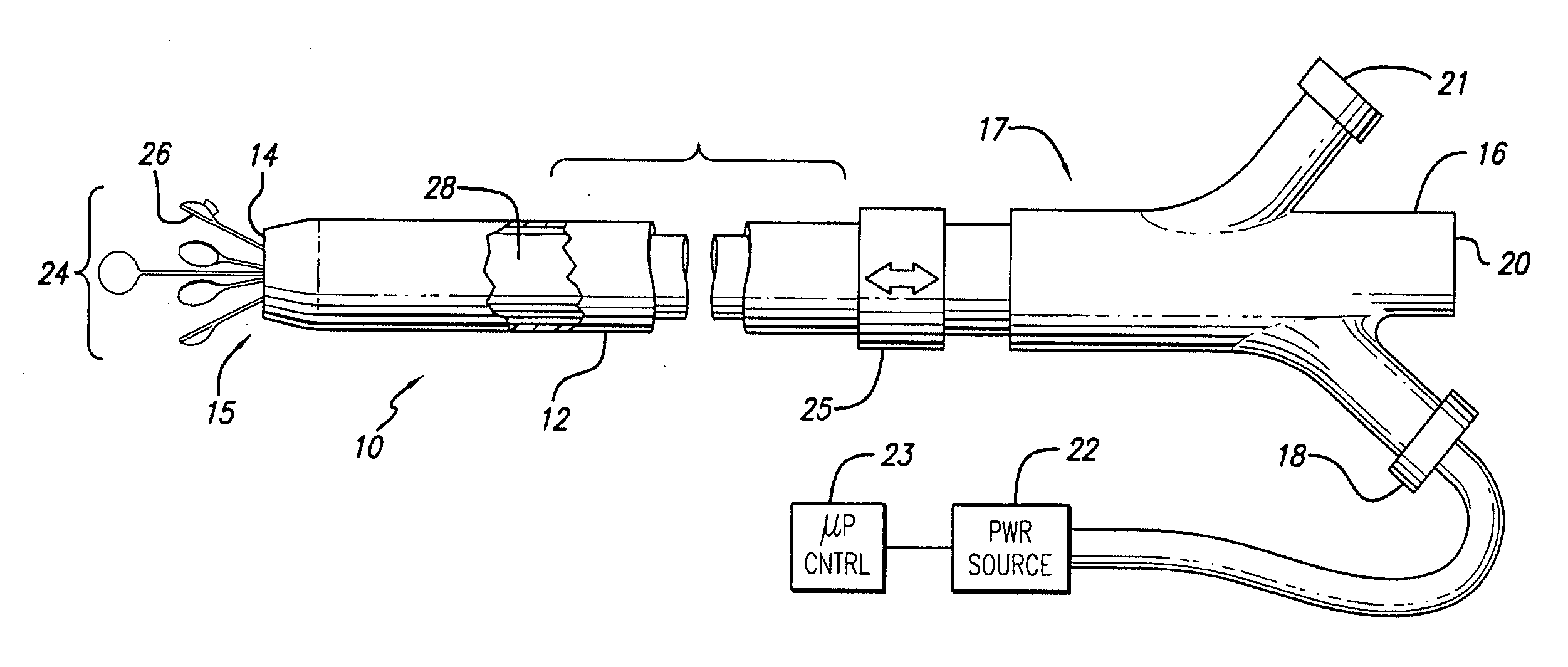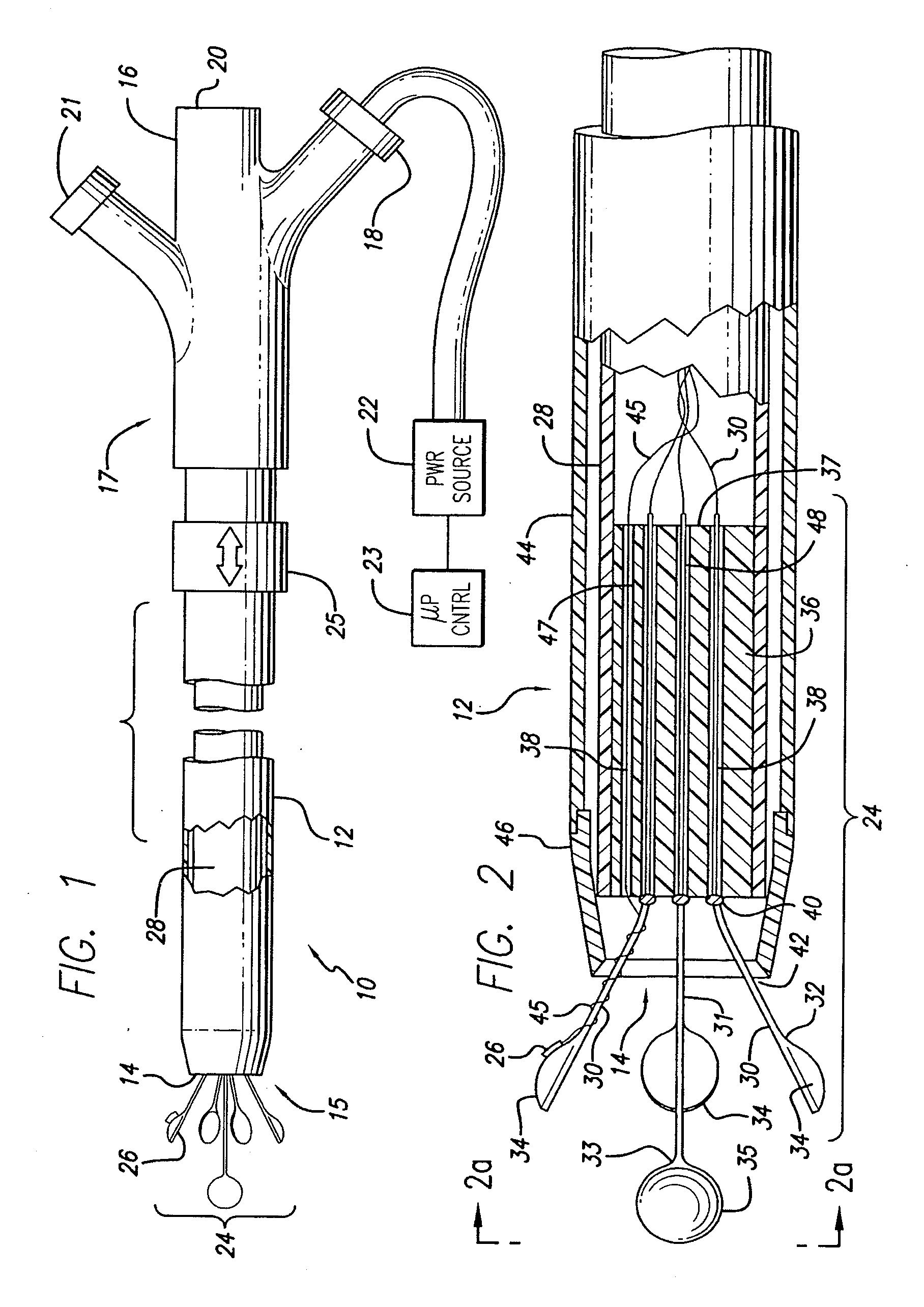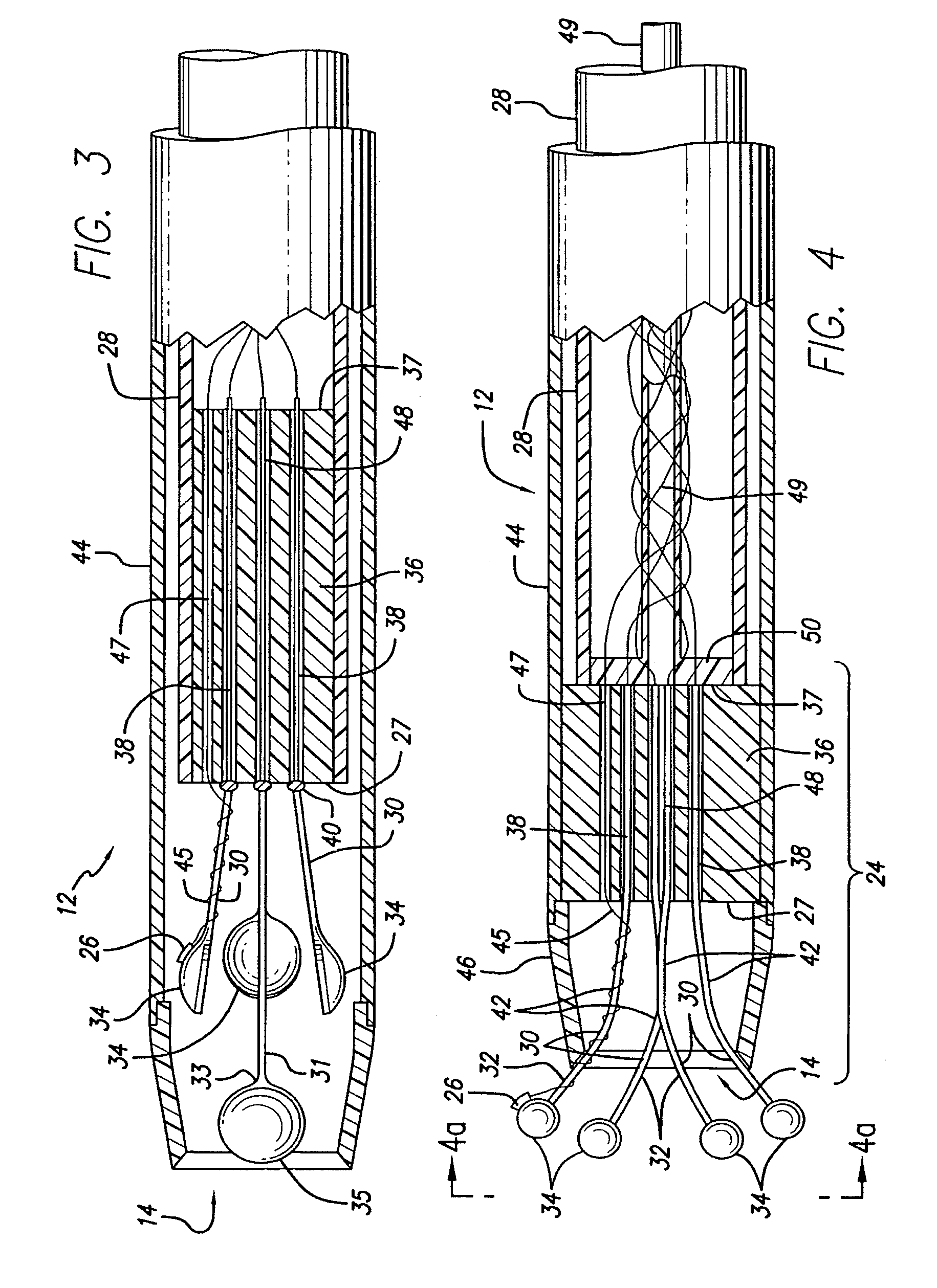Expandable catheter having two sets of electrodes
a technology of expanding catheter and electrode, which is applied in the field of methods and equipment, can solve the problems of additional valvular failure, inability to close the valve, unsightly discoloration, and ulceration, and achieve the effect of uniform and predictable shrinkage of the structur
- Summary
- Abstract
- Description
- Claims
- Application Information
AI Technical Summary
Benefits of technology
Problems solved by technology
Method used
Image
Examples
Embodiment Construction
[0072]Turning now to the drawings with more particularity wherein like reference numerals indicate like or corresponding elements among the figures, shown in FIG. 1 is a catheter 10 for applying energy to an anatomical structure such as a vein. The catheter 10 includes an outer sheath 12 having a distal orifice 14 at its working end 15. The connector end 17 of the outer sheath 12 is attached to a handle 16 that includes an electrical connector 18 for interfacing with a power source 22, typically an RF generator, and a microprocessor controller 23. The power source 22 and microprocessor 23 are usually contained in one unit. The controller 23 controls the power source 22 in response to external commands and data from a sensor, such as a thermocouple, located at an intraluminal venous treatment site. In another embodiment, the user can select a constant power output so that automated temperature control is not present and the user can manually adjust the power output in view of the tem...
PUM
 Login to View More
Login to View More Abstract
Description
Claims
Application Information
 Login to View More
Login to View More - R&D
- Intellectual Property
- Life Sciences
- Materials
- Tech Scout
- Unparalleled Data Quality
- Higher Quality Content
- 60% Fewer Hallucinations
Browse by: Latest US Patents, China's latest patents, Technical Efficacy Thesaurus, Application Domain, Technology Topic, Popular Technical Reports.
© 2025 PatSnap. All rights reserved.Legal|Privacy policy|Modern Slavery Act Transparency Statement|Sitemap|About US| Contact US: help@patsnap.com



